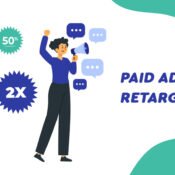- 80 Broad Street, NY, USA
- info@hexerve.com

call emergency
+88 036 656 99
- 80 Broad Street, NY, USA
- info@hexerve.com

call emergency
+88 036 656 99

How to Build a HIPAA-Compliant Growth Marketing Funnel for Healthcare Services?
The healthcare industry is evolving rapidly, and so is the way healthcare services attract and
retain patients. Growth marketing strategies that work in e-commerce or SaaS can’t be
applied directly to healthcare due to strict privacy laws. If you’re in healthcare, building a
HIPAA-compliant growth marketing funnel is essential—not just to drive leads, but to protect
patient data and avoid legal consequences.
In this blog, we’ll walk through the steps to create a healthcare marketing funnel that
complies with the Health Insurance Portability and Accountability Act (HIPAA) while
eectively driving conversions.
What is a HIPAA-Compliant Marketing Funnel?
A marketing funnel is a strategic model that guides potential patients from awareness to
decision. A HIPAA-compliant marketing funnel does this while ensuring all patient data
collected, stored, or processed is protected under the HIPAA Privacy and Security Rules.
This means that from landing pages to CRMs, every tool and process must safeguard
Protected Health Information (PHI), such as email addresses, names, IP addresses,
appointment requests, and other identifiable data related to healthcare services.
Step-by-Step Guide to Building a HIPAA-Compliant Marketing Funnel
- Identify PHI Touchpoints
First, understand where you might collect PHI in the marketing funnel. Common examples
include:
- Contact forms
- Appointment scheduling
- Live chat tools
- Newsletter signups (if related to patient info)
- Retargeting ads (when they use PHI)
If any part of your funnel collects PHI, that data must be protected according to HIPAA
regulations.
- Use HIPAA-Compliant Marketing Tools
Not all marketing platforms are HIPAA-compliant. Choose vendors who will sign a BusinessAssociate Agreement (BAA) and can demonstrate compliance. HIPAA-compliant tools often include:
- Email Marketing: Paubox, LuxSci, Mailchimp (HIPAA plan only)
- CRM: Salesforce Health Cloud, Zoho (HIPAA-enabled)
- Forms: Jotform HIPAA, Formstack
- Landing Pages: Unbounce with HIPAA integration, or custom-built secure pages
- Ads: Google and Meta can be used but without targeting based on health conditions
Never use standard tools for PHI unless they oer a HIPAA-compliant version.
3. Design Funnel Stages with Privacy in Mind
Break your funnel into standard stages and align them with HIPAA principles:
Top of Funnel (Awareness)
Use non-PHI content such as blog posts, SEO, and social media to educate and drive trac.
Use paid ads but avoid targeting sensitive conditions
Build landing pages that provide value without asking for PHI
Middle of Funnel (Consideration)
This stage involves nurturing leads through gated content like whitepapers, webinars, or
newsletters.
- If forms collect data, use HIPAA-compliant forms
- Use encryption for data collection
- Include disclaimers about data usage
Bottom of Funnel (Conversion)
This includes appointment requests or consultations.
- Secure scheduling platforms
- Data encryption in transit and at rest
- Ensure backend systems like EMRs and CRMs are secure
- Secure Your Website
Your website is the core of your funnel. Make sure:
- SSL certificates are active
- Forms are encrypted
- Login portals are secured with multi-factor authentication (MFA)
- Access controls and audit logs are maintained
Regularly conduct vulnerability scans and risk assessments.
5. Employee Training & Internal Compliance
Even the best funnel can fail due to human error. Ensure all team members:
- Undergo HIPAA training
- Understand how to handle PHI
- Follow security protocols when accessing or sharing data
Create a HIPAA Privacy Policy that’s visible on your site and ensure marketing sta have read
and understood it.
6. Monitor, Optimize, and Stay Updated
- HIPAA compliance is ongoing. Regularly:
- Audit your funnel for compliance
- Review BAAs with vendors
- Update privacy policies and tools
- Test security systems
Meanwhile, analyze funnel performance using de-identified data to remain compliant while
improving marketing eectiveness.
FAQs: HIPAA and Growth Marketing in Healthcare
Q1. What counts as PHI in marketing?
Any individually identifiable health information that you collect, store, or transmit—including
email addresses tied to health services—is PHI.
Q2. Can I run Facebook or Google ads for healthcare?
Yes, but you must not use PHI to target or retarget users. Avoid using Custom Audiences built
from health-related contact lists.
Q3. What’s a Business Associate Agreement (BAA)?
A BAA is a legal document between a HIPAA-covered entity and a vendor that handles PHI,
outlining responsibilities and security protocols.
Q4. Can I use standard tools like Google Analytics?
Standard Google Analytics is not HIPAA-compliant. Use HIPAA-safe alternatives or
configurations that de-identify data.
Q5. Do I need consent to email leads?
Yes. Ensure explicit consent
Recent Posts




